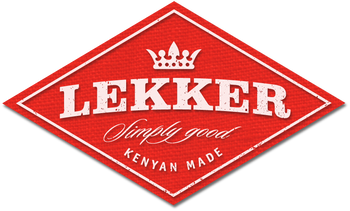Gouda Cheese 101

Gouda we learn more?
Here is everything you need to know about the infamous Dutch dairy, Gouda cheese! The making process, varieties, flavour, how to store it, nutrition info, and more.
Where does Gouda cheese come from?
Contrary to what you might think, Gouda cheese is not actually made in the city of Gouda, but rather, it is traditionally bought and sold in Gouda. Way back in the Middle Ages, towns could earn the rights to trade certain commodities. The town of Gouda had the rights to trade cheese, so that’s where people went to buy and sell cheese!
Nowadays, “Gouda” refers more to the style of cheesemaking than the actual cheese, as Gouda cheeses can vary widely depending on age. For this reason, the name “Gouda” isn’t protected or meant to define only the cheese coming from Gouda. If you want the real deal, look for “Noord-Hollandse Gouda”, as this title is protected and can only represent true Dutch Gouda made with Dutch milk.

Gouda Cheese Market. Gouda, Netherlands.
How is Gouda Cheese Made?
So how is Gouda made? When cultured milk curdles, some of the liquid whey is removed and replaced with warm water, which is then drained. This is known as “washing the curds”, and it helps to remove extra lactose, therefore preventing some of the lactic acid formation. The curds are then pressed into round molds and are plopped into a brine (salt water) bath. The cheese is then set out to dry, coated in wax or plastic, and aged for anywhere from one month to over one year.
How do you pronounce Gouda?
If you aspire to be a real cheese connoisseur, you’re going to have to pronounce it right. While in many places across the globe they pronounce it “g-OOO-dah”, it’s actually pronounced “(g)h-OW-da”.
Types of Gouda Cheese
In the Netherlands the common classification of cheese in the grocery is either “jong” (young) or “oud” (old). Digging a bit deeper, the Dutch actually classify their cheeses into six categories based on age:
- Young or New Gouda: aged 4 weeks
- Young Matured Gouda: 8 to 10 weeks
- Matured Gouda: 16 to 18 weeks
- Extra Matured Gouda: 7 to 8 months
- Old or Fully Matured Gouda: 10 to 12 months
- Very Old or Very Aged Gouda: over 12 months
What does Gouda cheese taste like?
The younger Gouda cheeses will have a more mild, soft, and almost sweet taste and texture. They’re best on sandwiches or crackers. The older Gouda cheeses become harder, stronger, and darker, taking on a buttery and nutty flavor. The deep flavor of the older Gouda makes it great for cooking (like in some Gouda mac n’ cheese perhaps), with crusty bread, or with wine.
What’s the white stuff on my cheese?
In the older/more matured Gouda cheeses, you may find crunchy, white crystals throughout the cheese. This is often confused with salt crystals, which sometimes form on the outside of the cheese as result of the brine bath. The clusters inside the cheese, however, are actually bits of tyrosine, an amino acid and the sign of a well-aged cheese!

Gouda cheese factory storage. Gouda, Netherlands
How to Store
Cheese is a living, breathing thing, so it’s best not to suffocate it in plastic. Wrap your Gouda in parchment paper, then loosely wrap that in plastic. Set in the warmest area of the fridge, like in a vegetable drawer near the bottom. Gouda should last 2 to 3 weeks. Freezing alters the texture of the cheese, so I would recommend against it unless you absolutely must.
Nutrition Information for Gouda Cheese
per 100 g (3.5 oz)
- Calories: 356
- Carbohydrates: 2 g
- Fiber: 0 g
- Protein: 25 g
- Fat: 27 g
- 70% Daily Value (DV) of Calcium: 1% of the calcium in your body plays a vital role in vascular contraction/dilation and nerve transmission and signalling. The other 99% supports teeth and bone structure and function.
- 26% DV of Vitamin B12: A water-soluble vitamin important in brain and nervous system function as well as red blood cell formation. It is only found naturally in meat and animal products, but can be made industrially via bacterial fermentation.
- 26% DV of Zinc: A mineral important in strengthening your immune system, healing wounds, and maintaining your sense of taste and smell.
- 20% DV of Riboflavin (Vitamin B2): A water-soluble vitamin that acts as a component of FAD to help your body break down macronutrients in the electron transport chain, creating usable energy.
- 11% DV of Vitamin A: Provides the preformed version of the this fat-soluble vitamin, meaning it comes from an animal source. It is essential in many components of healthy vision, as well as immunity and cell growth/differentiation.

